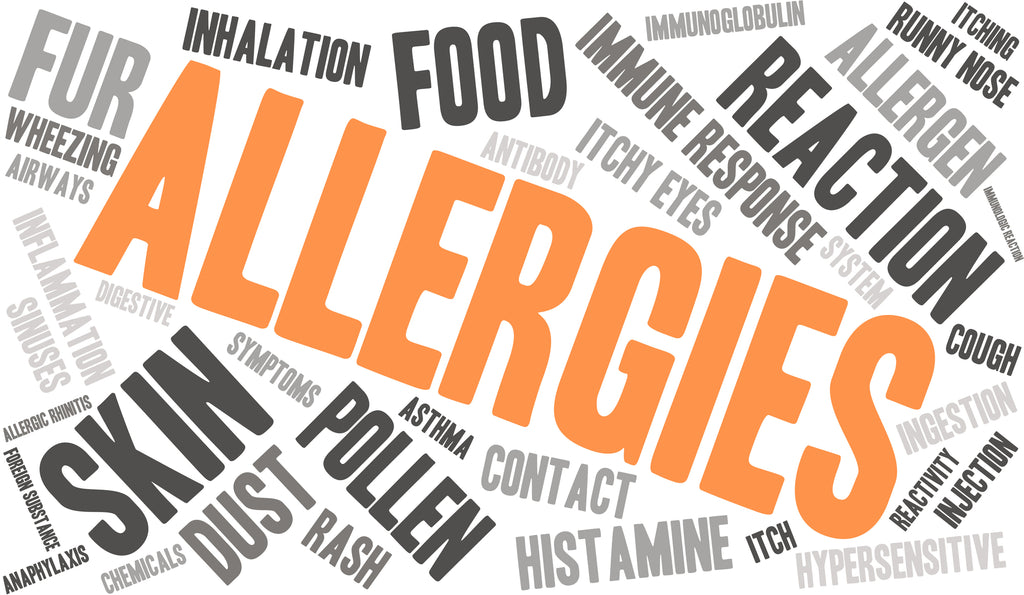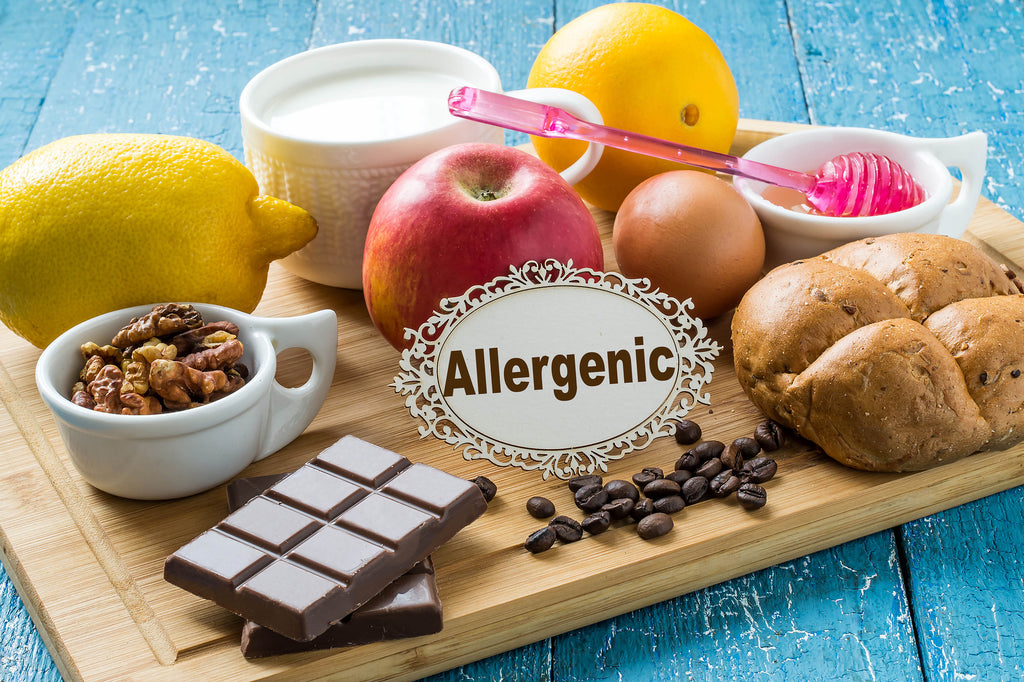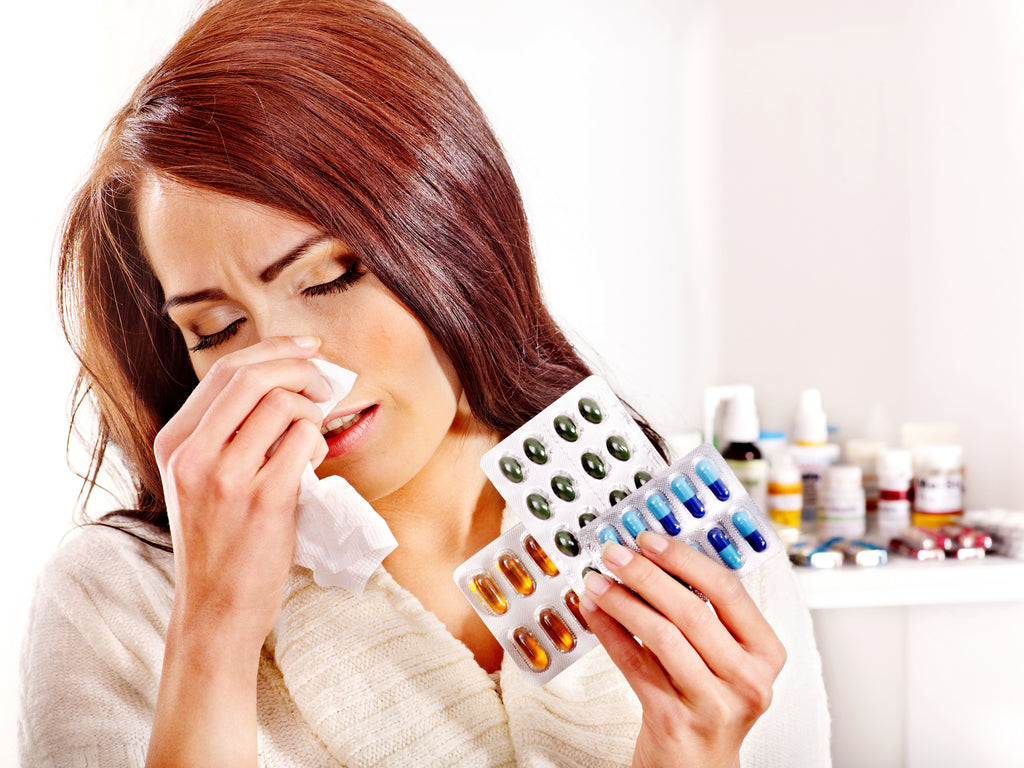Low Histamine Diet - Anti-Histamine Foods to Fight Allergies
ATTENTION: Allergy sufferers. This is the low histamine diet that can help you enjoy cats, hikes, and social situations even if you’ve been suffering from allergies, skin rashes, and unexplained anxiety your entire life.
Stick to these tips and foods and fighting back against your allergies will be delicious!
OVERVIEW: What Are Histamines and Why do They Hate You?

Just kidding, histamines don’t hate you. In fact, they love you. They love you so much that they act like a helicopter parent that tries to protect you from every little thing.
Anyone who’s chugged half a bottle of Benadryl just to get through the day at work knows that an antihistamine soothes allergic symptoms…but why?
When unwanted invaders are found in your system, histamine swells your blood vessels, making it easier for white blood cells to find the bad guys and repel the attack. But too much of it can cause it to go on a power trip and attack everything from peanuts to cat hair.
When you have a histamine intolerance (which actually isn’t an intolerance at all… we’ll explain next), histamine-rich foods can cause symptoms like a runny nose, headaches, hives, or anxiety.
Histamine “intolerance” is actually an imbalance in your system. You either are taking in too much histamine-producing food or don’t have enough of the enzymes that degrade it (DAO or HNMT).
Limiting foods with histamine and increasing your intake of low-histamine foods can help bring balance to The Force and improve your symptoms. Science has shown that an anti-histamine diet can reduce symptoms in as little as 4 weeks [1].
TL;DR: Histamine is involved in your immune response. Too much of it and you may experience mild to severe allergic symptoms. Histamine-intolerance is actually an imbalance in your system caused by too much histamine intake or a lack of the enzymes that degrade it. Eating an anti-histamine diet can help restore balance and improve your relationship with cats everywhere.
Foods to Avoid on a Low Histamine Diet: These Foods Could be Causing Your Misery!

“Thou Shalt Not Eat These Foods” - St. Anti-Histaminus, Roman Convention on the Sniffles, A.D 146
The histamine levels in certain foods are extremely difficult to pinpoint. They can even vary based on how old they are, cooking methods, additives, and other factors. This makes it EXTREMELY DIFFICULT to restrict histamine in your diet. The diet we followed was a near-exact replica of the diet used in the very successful histamine-restriction study we referenced earlier.
We avoided these high-histamine foods:
-
Any fermented foods: cheese (especially aged), yogurt, sour cream, milk, cabbage, radish, ketchup, mayo
- ANY INSTANT FOODS
- Pork and chicken
- Nuts
- Sauerkraut
- Alcohol of any kind
- Kimchi
- Kombucha (but what about my hangovers?)
- Certain veggies: Tomato, eggplant, spinach
- Asian restaurant staples: Miso, soy sauce, natto
- Vinegar
- High-histamine fruits - Grapes, bananas, strawberries
- Food additives
- Egg whites
- Certain fish and shellfish: Mackerel, tuna, mahi-mahi, and canned fish
- Cured meats: Salami, pepperoni, bacon (NOOOOO!!!)
**avoid seasoning as much as possible by using salt or ground pepper rather than sauce**
Note* You'll notice that many probiotic-foods are on this list. It's not that probiotics specifically are bad, but they need to be targeted low histamine probiotics, instead of the general and typically healthy bacteria.
Avoiding these foods is even more important than consuming low-histamine foods. We do have to warn you, though, that it can be extremely restrictive and lead to issues if you don’t know what you’re doing. See our tips section at the end to learn more.
Not to mention that it basically eliminates every good food on Earth from your diet.
Is the Low-Histamine Diet Effective?

We want to be as honest and transparent as possible...
The low-histamine diet and histamine in food are still poorly understood. We know the basics and we have plenty of anecdotal evidence, but more research must be done.
Since diagnosing histamine intolerance is so difficult, the low-histamine diet’s primary use as of now is as an elimination tool. Histamine tolerance varies so much between individuals that going on a restrictive diet can help you and your doctor better understand your tolerance.
However, there is still scientific evidence that all of this antihistamine mumbo jumbo is really going somewhere. Check this out: one study on 22 adults with hives found that prohibiting high-histamine foods resulted in significant reduction in plasma histamine levels and suggested a low-histamine diet could be a tool for treating adults with hives [2]. The Academy of Nutrition and Dietetics even offers food guidelines for histamine intolerance [3], so there must be something here.
BONUS: DAO-Blocking Foods
Diamine oxidase (DAO) is the main enzyme responsible for breaking down histamine in your body. Consuming foods that block it may be leading to your symptoms. Avoid alcohol, green tea, black tea, and energy drinks to optimize your DAO levels and help restore balance.
Back to histamine…
Now that you know what’s causing your imbalance and which foods to avoid, let’s get to the foods that promote healthy histamine levels and could stop that runny nose, headache, rash, or anxiety.
Low Histamine Foods to Fight Allergies
OK, so we bet you’re aching to know the histamine intolerance diet we used to help improve our relationship with cats, trees, and people we barely know.
It’s not exciting, but it’s effective. This diet is based on the recommendations of the Department of Nutrition in terms of a histamine restricted diet [4].
- White rice
- Bean sprouts
- Steamed eggs
- Mushrooms
- Grilled beef
- Fish: sole, croaker, codfish
- Bulgogi (Korean food Friday lives on!!)
- Cereal flakes
- Cucumbers
- Toast
Other low-histamine foods include:
- Pure peanut butter
- Mango, pear, apple, kiwi
- Dairy substitutes: Coconut milk, almond milk, etc.
- Leafy herbs
We know what you’re thinking. “THAT’S WHAT I GET TO EAT? No thanks, allergies are fine.”
Toughen up! It only takes about 3-4 weeks to see results. If you feel better, you now know what your problem has been all along.
Also, remember that this is about restricting histamine. You can never eliminate it. As long as you significantly reduce your intake, you should see results. You can sneak a cheat in every once in a while, but make sure to keep it a dirty-little-secret treat and not an everyday thing.
Tips for a Successful Low-Histamine Diet

This diet is not easy. We started with vigor and enthusiasm about finally eliminating our allergies, but after 4 days of “cereal flakes” and rice for every meal, we were begging for our migraines to come back.
Here are some tips we used to stick it out and finally get our allergies under control.
- Cook as many of your meals as possible: As we said, everything from the ingredients to how you cook your food influences histamine. STOP BEING LAZY AND COOK. Speaking of that…
- Boiling is best: Boiling or steaming food is apparently better than grilling (for your health, anyway).
- Limit seasoning but not too much: Seasoning with salt and pepper is fine. Avoid sauces.
- Eat FRESH: Even foods that are high-histamine are better for you if they’re fresh. Fresh fruit, fish, and meat have lower histamine levels than processed or frozen counterparts. It’s a numbers game, people.
- Record your symptoms: Keep an “I hate my life” journal and record when you feel symptoms along with the foods you’d eaten.
- Consider supplementation: The low-histamine diet is extremely restrictive. Speak to your doctor about making nutrient ends meet using supplements.
- Listen to your body: What’s worse, the sniffles or nutrient deficiencies that lead to severe issues? Don’t go crazy. If your body is starting to feel worse, don’t push it. Speak to your doctor.
- Divide foods into rice, main dish, and sides and never exchange one or the other: To keep a balanced diet, divide your food options into these 3 categories. You can exchange one for another in the same category (white rice for rice with sorghum), but you can’t exchange rice for bulgogi. Make sense?
Is the Low-Histamine Diet Going to “Cure” Your Allergies?

There is no cure for allergies. In fact, your headaches, fever, and runny nose are actually a good thing sometimes. It’s worth it to get rid of an infection, right?
No low-histamine diet is going to cure all of your symptoms. Your body is a complex result of dozens of competing systems trying to maintain balance keep life going forever. It’s not gonna happen. You have to optimize every facet of your life—diet, supplements, environmental factors—if you want to live a better, happier life.
That being said, this low-histamine diet helped us get to the bottom of allergy issues and avoid foods that exacerbated our symptoms. We quickly noticed that our headaches were less severe, and we weren’t always sneezing every time a kitten was in a 15-mile radius.
This diet will help, but everyone is different. The only way you can know is to try!
References
[1] https://www.ncbi.nlm.nih.gov/pmc/articles/PMC5839887/
[2] https://www.ncbi.nlm.nih.gov/pmc/articles/PMC5839887/
[3] https://jandonline.org/article/S2212-2672(14)01454-3/fulltext
[4] https://www.ncbi.nlm.nih.gov/pmc/articles/PMC5839887/table/T1/
Updated: January 21, 2020